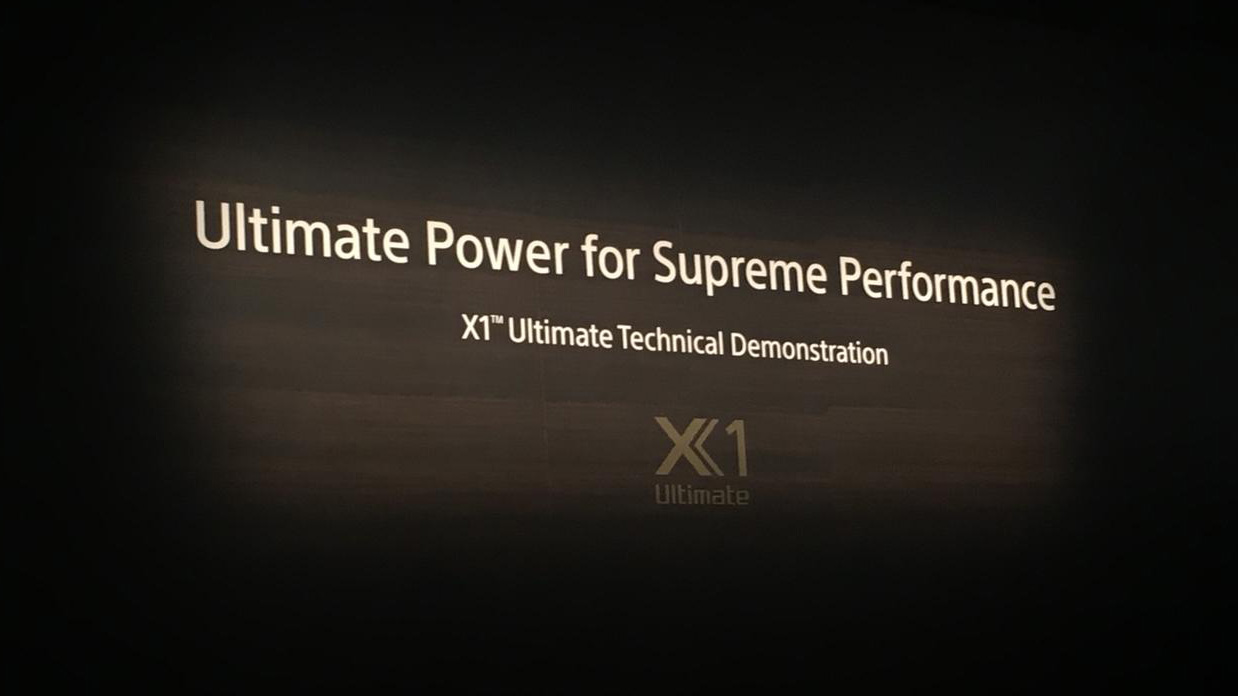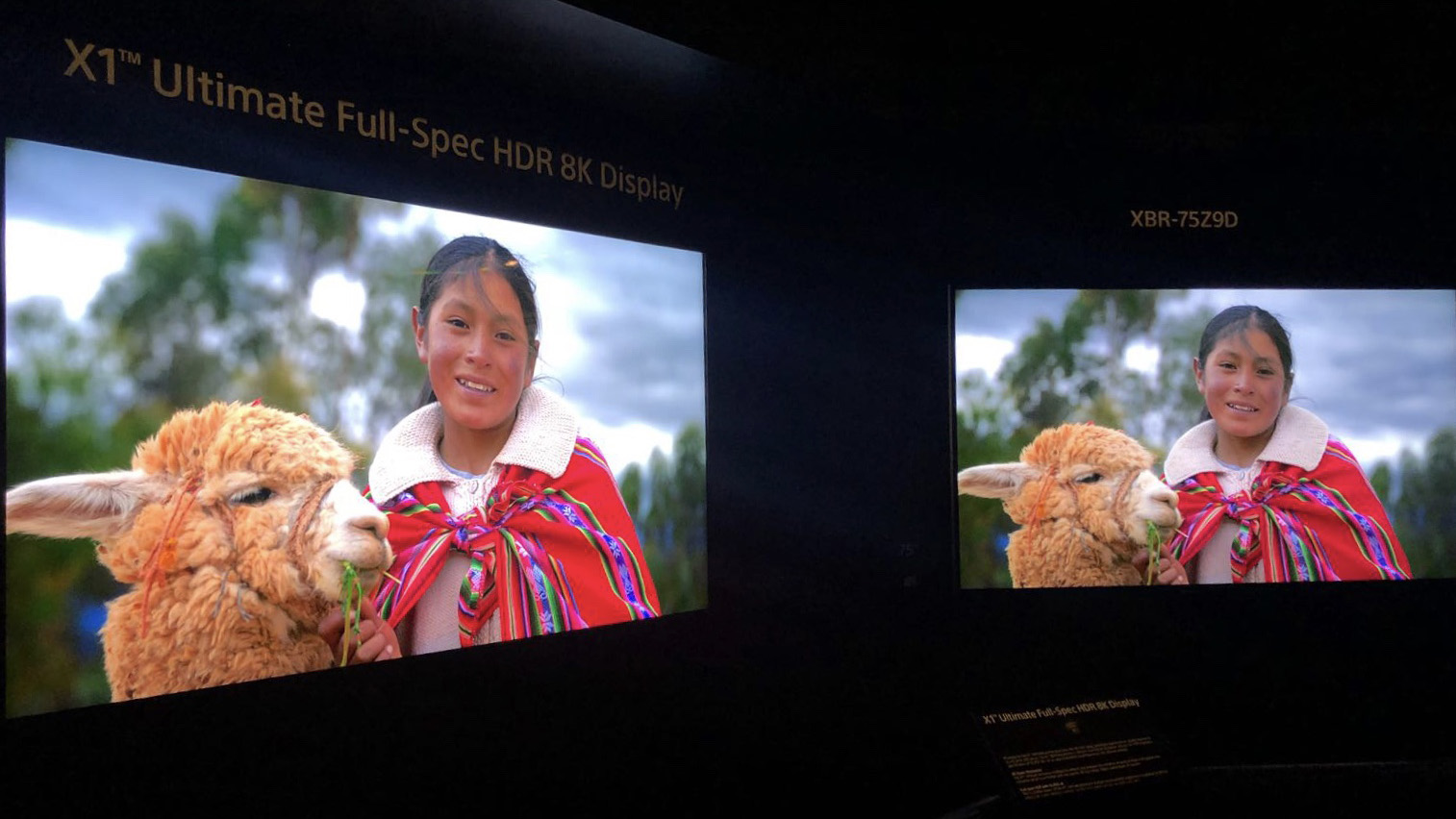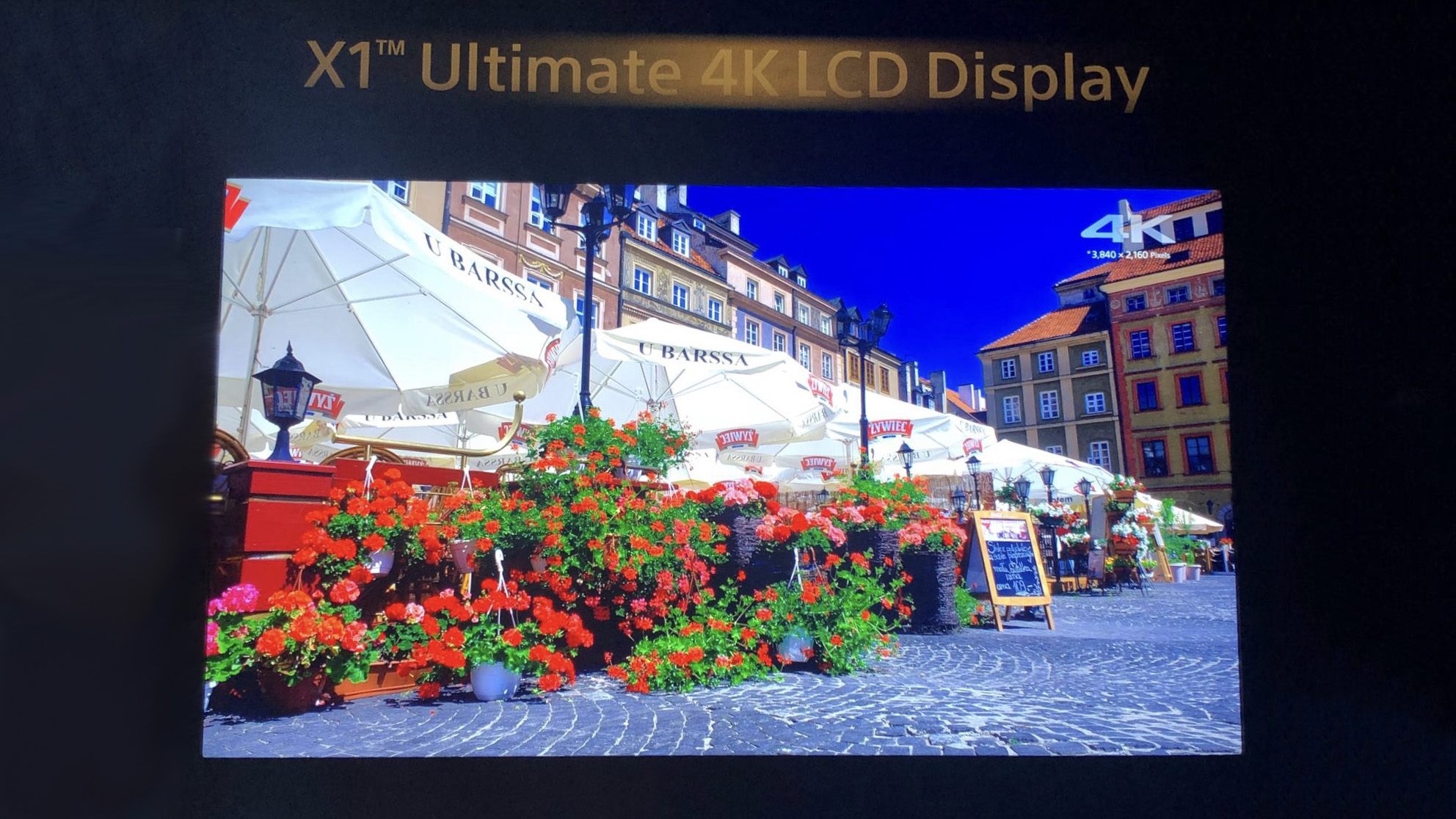Sony X1 Ultimate: We take a closer look at Sony's next-gen TV processor
Get ready for TVs that are brighter than ever before

Like a lot of the big brands at CES 2018, Sony has been thinking ahead. So while it used the show to unveil the first of its 2018 TV sets featuring its excellent current-gen X1 Extreme processor, it’s also been teasing what’s possible from the Extreme’s successor, the X1 Ultimate.
Set to power Sony’s TVs of the future, the X1 Ultimate was flexing its muscles at a few demos on the Sony stand to show what it’s capable of when it comes to brightness, detail, frame rate and picture resolution.
Read on for more details on what could be some of Sony’s most exciting TV technology yet.
What is the X1 Ultimate?
The X1 Ultimate is a prototype processor for Sony’s TVs, which Sony says it has been working on for a few years now. It is reportedly two times as powerful as Sony’s current X1 Extreme, the brains behind Sony’s flagship ZD9 LCD TV and its A1 and AF8 OLED sets.
This power increase is important since as TV tech advances, so the tellies themselves need a more powerful processor to ensure new features like higher picture resolutions (such as 8K) and improved frame rates are handled smoothly and effectively. Sony says the X1 Ultimate is ready for all of these new features as and when they arrive.

What can it do?
Sony claims the X1 Ultimate is futureproofed to support the maximum specification of HDR, and was on demo powering an 8K LCD screen with a backlighting system capable of 10,000 nits peak brightness. That’s more than five times the brightness that the ZD9 can manage, one of the brightest and most capable HDR screens we’ve seen.
If that sounds blindingly bright to you, we’d be inclined to agree. But as we’ve seen with current TVs, very few actually make use of their quoted peak brightness, and if they do, it’s likely to account for a very small part of the content on screen, for a very short period of time.
Get daily insight, inspiration and deals in your inbox
Sign up for breaking news, reviews, opinion, top tech deals, and more.

Having so much brightness to play with is more about giving content creators the ability to utilise higher luminance in scenes where it’s needed, while also preventing tone mapping.
Tone mapping is when a display dims its overall picture to retain detail and impact in a scene’s brightest highlights.
This usually happens when an element has been graded too brightly for the capabilities of the screen, so it reduces the overall luminance of a picture to prevent clipping (loss of detail), and to help the HDR element to still stand out in the scene as intended.
As content is currently graded up to 4,000 nits and most TVs promise a peak brightness of less then 2,000 nits, this is a problem that plagues even the most capable displays.

Giving content producers the headroom to push brightness to the maximum of their grading capabilities (and beyond) will be a big step, and means there will be no compromise required to show highlights just as they were intended.
Sony describes it as the difference between looking at a TV and looking through a window. While a little cheesy, it’s not far wrong – with the added detail offered up by the 8K resolution (upscaled from a 4K source), the demo footage we saw looked cleaner, clearer and more lifelike than the footage displayed next to it, on the ZD9.
Colours were more saturated, highlights had more punch and the overall picture was brighter and more vibrant. Sony wouldn’t talk specifics about colour space, but it did say that thanks to the huge improvements in luminance, the colour volume on the 8K set would be much better than the current crop of tellies.
But what can it do right now?
While 8K demos are all well and good, it’s almost more interesting to see what this next-gen processor can do with current technology, and so Sony had a demo to show the X1 Ultimate’s effect on a current 4K LCD and 4K OLED.
The extra brainpower in the X1 Extreme allows it intelligently analyse each object on screen on a frame-by-frame basis to improve detail and clarity at every step. The difference between the two was incredible considering it was working with the same screen and source, and fine detail in particular was hugely improved.

It also does a similar thing with HDR remastering, where it can evaluate each object on the screen in isolation, adjusting its colour and saturation to suit any given scene.
Sony gave us the example of that while the X1 Extreme might look at a fruit bowl as a single object for remastering, the X1 Ultimate would look at the individual fruit within the bowl. It’s much more precise, and makes for more realistic, more impactful HDR images, just by changing the processor.

When will it be available in Sony's TVs?
Sony hasn’t put a date on the X1 Ultimate as yet, but considering it’s been in the pipeline for a few years and is now at demo stage, it would suggest it’s fairly far down the production line.
That said, it certainly won’t be debuting in any of Sony’s 2018 TVs (they’ll be powered by the X1 Extreme), but we've got our fingers crossed that it might be ready for Sony's 2019 flagship TVs.
- For a look at what its predecessor, the X1 Extreme, is capable of, have a look at our review of the Sony A1E
Verity is a freelance technology journalist, with previous on-staff roles at What Hi-Fi?, Stuff, Pocket-lint and MSN.
Having chalked up more than 15 years in the industry, she has covered the highs and lows across the breadth of consumer tech, sometimes travelling to the other side of the world to do so. With a specialism in audio and TV, however, it means she's managed to spend a lot of time watching films and listening to music in the name of "work".
You'll occasionally catch her on BBC Radio commenting on the latest tech news stories, and always find her in the living room, tweaking terrible TV settings at parties.
